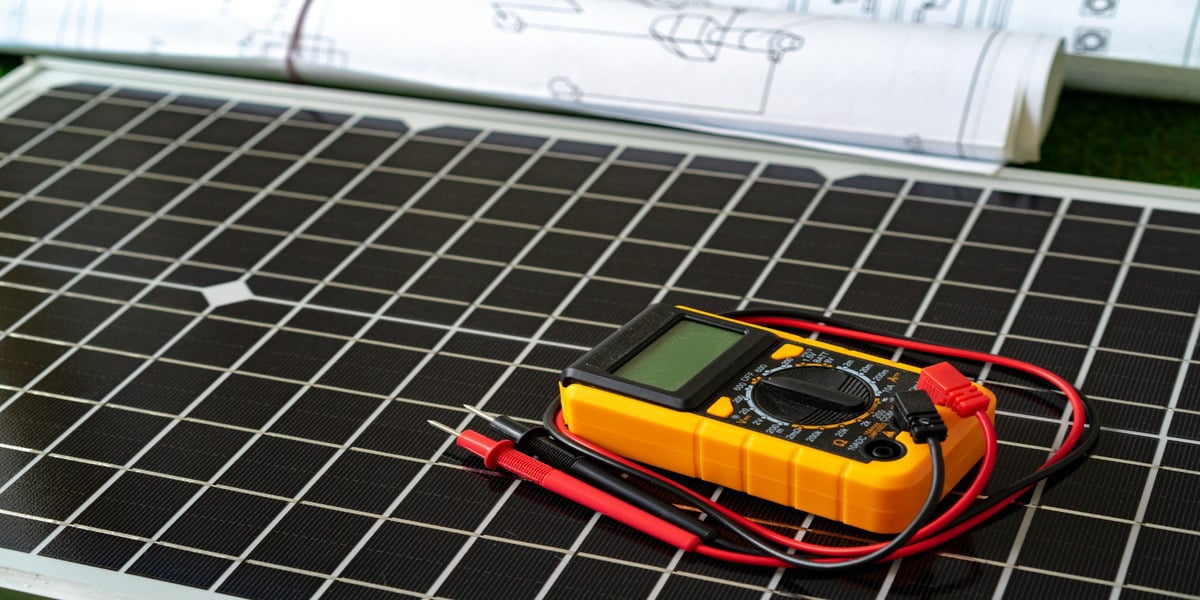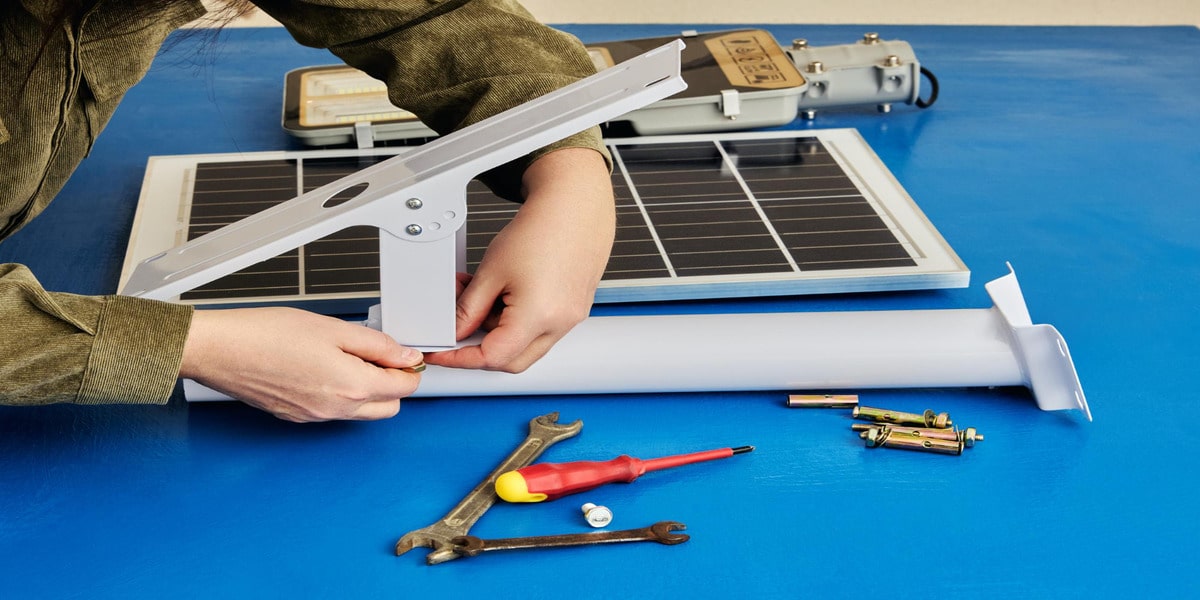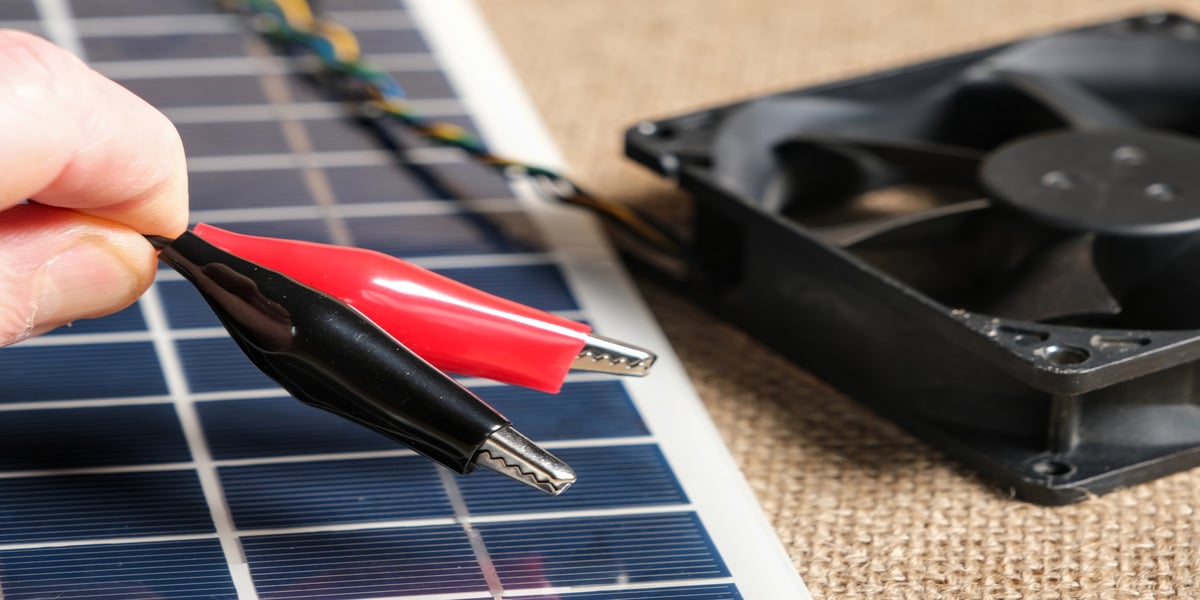Imagine this. It is a bright Saturday morning in Vancouver. You are sipping your perfectly brewed coffee, scrolling through your emails when suddenly your eyes land on your BC Hydro bill. The number stares back at you like an unwanted guest who refuses to leave your party. You sigh and think, “What if I could just build my own solar power system and say goodbye to these bills forever?”
It is a tempting thought. The internet is flooded with success stories of homeowners slashing their electricity costs with DIY solar panels. There are YouTube tutorials with smiling creators walking you through step-by-step installations. Forums are brimming with posts about people achieving off-grid independence. But is it really that simple? Or is it just another Pinterest dream that ends with tears and unexpected roof leaks?
In this article, Expert Electric breaks down what DIY solar power systems really involve, what costs to expect, the risks, benefits, and whether they are truly worth your precious weekends, money, and sanity. We will share real-world examples from our customers across BC, personal anecdotes from our team, and grounded insights to help you make an informed decision before climbing your ladder with a wrench in one hand and dreams of energy independence in the other.
Because let’s face it. Saving money is great. Saving yourself from a dangerous and costly installation mistake is even better. So, are DIY solar power systems worth it? Let’s find out together, one watt at a time.

What Is a DIY Solar Power System, Anyway?
At its core, a DIY solar power system is exactly what it sounds like. It is a solar power setup that you design, purchase, and install yourself without hiring a licensed solar installer. Typically, this means purchasing a kit online or from a local supplier that includes solar panels, an inverter, mounting hardware, wiring, and sometimes batteries if you plan on storing power for later use.
The solar panels are the most visible part of the system. They are those sleek, shiny squares you see on rooftops across BC, converting sunlight into direct current (DC) electricity. However, because our homes run on alternating current (AC), an inverter is needed to convert that power into something usable for your lights, appliances, and devices. Mounting hardware is used to secure the panels to your roof or a ground mount to ensure they do not become airborne during a Vancouver windstorm. Batteries, though optional, are essential if you want power at night or during outages, especially if your system is off-grid.
DIY solar systems sound straightforward, but each component must be selected to match your home’s energy needs. Panels must be arranged at optimal angles, wiring must comply with electrical codes, and inverters must handle the total energy produced. Mistakes in this stage are common. Our team at Expert Electric has seen DIY kits installed with the wrong type of inverter, leading to power losses or dangerous system failures. While assembling IKEA furniture incorrectly leads to a wobbly chair, assembling a DIY solar system incorrectly can lead to fires, electrical shocks, or costly repairs. In short, there is far more to it than simply plugging in a panel and enjoying free electricity for life.
Why People Love the DIY Solar Dream
The DIY solar dream appeals to many homeowners for a variety of reasons, starting with potential cost savings. Professionally installed solar systems can cost anywhere between fifteen thousand to twenty-five thousand dollars depending on the size of your system, the complexity of your roof, and whether you choose to include battery storage. For homeowners seeing online ads for DIY kits priced between four thousand to ten thousand dollars, the potential savings are significant. It is no wonder many people begin researching how to build their own system.
Beyond the money, there is a powerful sense of satisfaction and independence that comes from doing it yourself. The idea of harnessing the sun’s energy with your own two hands brings out the inner pioneer in many of us. You are not just saving on electricity bills. You are taking control of your energy future, reducing your carbon footprint, and gaining a new conversation starter for backyard barbecues. Some of our customers have told us how they spent weekends learning about solar wiring and mounting angles, enjoying the process like a challenging puzzle with a big reward at the end.
For rural BC homeowners in areas like Chilliwack, Mission, or Hope, where grid access is limited or power outages are common, DIY solar systems promise off-grid independence. Imagine never worrying about a downed line in a winter storm again. Your lights stay on, your heat stays running, and your phone stays charged. The dream of energy security is real and powerful, especially in regions where reliability is as important as cost.
However, dreams often come with hidden realities. DIY solar is no different. While cost savings, satisfaction, and off-grid freedom sound attractive, each comes with risks, responsibilities, and fine print that deserve close inspection before you place that kit in your online cart.
But Here’s the Catch: The Realities of DIY Solar
For every story of a successful DIY solar installation, there are others that end in frustration, unexpected expenses, or even danger. One of the first hurdles is permits and inspections. In British Columbia, you cannot simply install panels on your roof without notifying your city or utility provider. Electrical permits are required for any system connected to your home’s electrical panel. Additionally, your installation must comply with the Canadian Electrical Code and DIY electrical work compliance standards, which exist to ensure systems are safe, effective, and durable.
Most homeowners are surprised to learn that to connect their system to BC Hydro’s grid and qualify for net metering and self-generation credits, your installation needs to be signed off by a certified electrician. This means that even if you install the panels yourself, you will likely need to hire a professional for the final electrical connection and inspection. Without these approvals, your system cannot legally feed power back to the grid, making your ROI expectations unrealistic.
Then there are warranty and insurance considerations. Many solar panel manufacturers void warranties if their products are not installed by certified professionals. Your home insurance provider may also refuse to cover damages related to a self-installed system if it is deemed unsafe or non-compliant. At Expert Electric, we have responded to calls where panels installed incorrectly caused roof leaks, electrical shorts, or even near fires, leading to claims denied by insurers and thousands in out-of-pocket repairs.
Finally, safety risks cannot be overstated. Installing solar panels involves working at heights, carrying heavy equipment, managing electrical wiring, and drilling into roof structures. Without proper training, tools, and safety precautions, these tasks can result in injury or structural damage. It is not uncommon for DIY installers to cause roof leaks by drilling mounts into shingles without waterproof flashing or proper sealing.
In the end, the realities of DIY solar are about more than money. They are about compliance, safety, warranties, and protecting your most valuable asset, your home.

Personal Anecdote: The Case of the Loose Panels
Let us share a real story from last summer that perfectly illustrates what can go wrong with DIY solar installations. A homeowner in Surrey called Expert Electric in a panic one morning after waking up to an unsettling sound. He looked out his window to see that several of his solar panels were sliding off his asphalt roof, teetering dangerously above his driveway.
When our team arrived, we discovered that he had installed the panels himself using mounting brackets designed for metal roofs, not shingles. Worse, he had fastened them with standard wood screws, believing that the weight of the panels would hold them down. Unfortunately, after a heavy Vancouver rainstorm saturated the roof, the mounts loosened, and gravity began to do its work.
Not only was he at risk of losing his five-thousand-dollar investment in panels, but his roof had sustained water damage where the mounts had allowed water to seep through, rotting the plywood underneath. The final cost included removal of the panels, replacement of damaged roof sections, and a professional reinstallation of his solar system to code, totaling over seven thousand dollars.
This customer was fortunate that no one was injured and no panels crashed onto vehicles below. Many DIY installers underestimate how critical structural integrity, proper mounting techniques, and weatherproofing are for rooftop solar. It is a lesson we see repeated too often, and it is why Expert Electric emphasizes safety, compliance, and manufacturer-approved installations for every customer.
Is DIY Solar Really Cheaper? Let’s Do the Math
On the surface, DIY solar systems seem like the budget-friendly solution everyone dreams of. If you browse online today, you will find solar kits ranging from four thousand to ten thousand dollars, depending on the wattage and inclusion of batteries. Compare that to a professionally installed system, which can range from fifteen thousand to twenty-five thousand dollars, and it feels like a no-brainer.
However, let us break down the real numbers. A standard DIY solar kit that powers a medium-sized home may cost around five thousand five hundred dollars for panels, an inverter, and mounting hardware. Batteries, if you want reliable nighttime or backup power, can add another three thousand five hundred dollars. Permits and inspections, which are mandatory in BC, will cost between five hundred to one thousand dollars, depending on your municipality.
Then comes tools and installation materials. Most homeowners do not have solar-compatible wiring, crimping tools, specialized drills, or roof sealants sitting in their garage. Purchasing or renting these can easily add another five hundred dollars or more to your expenses. Lastly, there is your time. Installation is not a Saturday afternoon project. Expect to spend multiple weekends planning, measuring, drilling, wiring, and troubleshooting.
Professional installations, while more expensive upfront, include everything, equipment, warranties, permits, inspections, electrical work, structural assessments, and labour. You pay for peace of mind, compliance, and efficiency. Most importantly, professionally installed systems operate at peak performance, often yielding twenty to thirty percent more usable energy compared to improperly installed DIY systems.
When factoring in potential repair costs from mistakes, such as roof leaks or electrical damage, plus the risk of voided warranties and insurance exclusions, the DIY cost advantage quickly narrows. Many customers we have spoken to started with a DIY budget of eight thousand dollars, only to end up spending twelve thousand or more to fix issues and finish the installation with professional help. It is a sobering calculation that every homeowner should run before diving into DIY solar with dollar signs in their eyes.
When Might DIY Solar Be Worth It?
Despite the risks, there are scenarios where DIY solar power systems can be a worthwhile pursuit. If you own a small off-grid cabin in the interior of BC, such as near Merritt or Princeton, where grid connections are unavailable or too costly, installing a small DIY solar system can provide basic lighting, device charging, and water pump operation. These systems are often ground-mounted, avoiding the complexities of rooftop installations, and they power a few essential devices rather than an entire household.
DIY solar is also a feasible option for RV enthusiasts. Many of our customers who travel with motorhomes invest in portable DIY solar kits to keep their batteries charged while camping off-grid. These kits are designed for easy setup, minimal wiring, and direct connection to RV battery systems, making them low-risk and highly practical for their intended use.
Additionally, if you are a licensed electrician or have significant experience with electrical systems and construction, a DIY solar project can become a manageable, rewarding challenge. You understand safety protocols, code requirements, and system design principles that average homeowners might not. In these cases, DIY can result in meaningful savings and high-quality installation outcomes.
Lastly, DIY solar can be ideal for temporary or experimental setups. If you are testing solar performance for a future large-scale installation, running a small greenhouse setup, or teaching students about renewable energy systems, a DIY approach can be cost-effective and educational. The key is knowing your limits, understanding your goals, and matching your system’s complexity to your knowledge and resources.

When You Should Definitely Call a Pro
For most homeowners looking to install a grid-tied solar system capable of powering their entire home and feeding excess power back to BC Hydro for net metering credits, professional installation is non-negotiable. These systems require precise calculations for load demands, inverter sizing, panel placement, and wiring to ensure maximum efficiency and safe grid integration. They also require permit approvals and inspections that can only be signed off by licensed electricians.
You should also call a professional if your home has a complex roof layout, multiple stories, or older roofing materials that require careful assessment before mounting solar panels. Attempting to install a system yourself under these conditions risks damaging your roof, reducing its lifespan, and creating expensive leak problems down the line.
If your priority is manufacturer warranties and insurance coverage, hiring certified solar installers is essential. Many brands will only honour their product warranties if installation is carried out by approved professionals. Similarly, home insurance providers often require proof of compliant installation to cover damages or liability issues related to solar systems.
Finally, if you want peace of mind, professional installations are worth every dollar. You avoid hidden risks, enjoy optimal energy savings, and rest easy knowing your system is designed and installed for longevity and safety. At Expert Electric, we see solar as a long-term investment, not a weekend project, and we believe homeowners deserve systems that deliver reliable, worry-free power for decades.
Frequently Asked Questions
Q: What is a DIY solar power system?
A: A DIY solar power system is a self-installed solar setup including panels, inverter, and mounting hardware without hiring a licensed solar installer.
Q: Are DIY solar power systems worth it?
A: DIY solar systems can be worth it for small off-grid uses or if you have electrical experience, but for full-home setups professional installation is safer and more cost-effective long-term.
Q: What are the risks of installing solar panels yourself?
A: DIY solar risks include electrical hazards, voided warranties, insurance issues, code violations, roof leaks, and safety risks from working at heights without proper training.
Q: How much does a DIY solar system cost compared to professional installation?
A: DIY kits cost around $5,000-$10,000 but often incur extra expenses. Professional installations cost $15,000-$25,000 including warranties, compliance, and optimal energy performance.
Q: When should I call a professional instead of doing DIY solar?
A: Call a professional for full-home grid-tied systems, complex roof installations, ensuring warranties, and compliance with permits and insurance requirements.
Expert Electric’s Final Verdict
After working with countless homeowners across Vancouver, Burnaby, Surrey, Langley, and Coquitlam, our team at Expert Electric has seen both the triumphs and the pitfalls of DIY solar power systems. The truth is, while DIY solar can work for small, off-grid, or low-demand applications, it rarely delivers the promised savings and performance for full-home, grid-tied systems.
DIY solar is worth it if you are an experienced electrician or have deep technical knowledge, and your system goals are modest. For everyone else, it is a risky undertaking that often results in higher long-term costs, compromised safety, and disappointing performance. Solar energy is an investment in your home’s value, energy security, and environmental footprint. Like any major investment, it deserves professional planning, design, and installation to ensure it pays off.
Before buying that kit online, ask yourself: Am I confident in my electrical, structural, and safety skills to protect my home and family? If the answer is no, give us a call. We promise not to judge your YouTube research skills. In fact, we love working with homeowners passionate about solar energy and happy to collaborate to create efficient, code-compliant systems that achieve their energy dreams.
Contact Expert Electric Today
If you are considering solar power for your home, do it right the first time. Contact Expert Electric for a consultation, quote, or friendly advice on how to achieve the best energy outcomes for your family.
- Call Us: 604-681-8338
- Email: info@expertelectric.ca
We serve homes and businesses across Vancouver, Burnaby, Surrey, Langley, Coquitlam, and beyond. Let us help you harness the power of the sun safely, efficiently, and professionally. Your roof, wallet, and future self will thank you.


